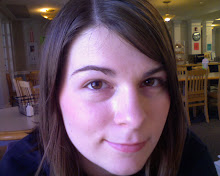I decided to mooch this book on a whim because I read
Annie John a few semesters ago for a World Lit class. While
Annie John wasn't exactly my favorite book from the class, I remember feeling like certain major themes in the novel stood out to me and stayed with me, and I was curious to see how it compared to some of her other work. It seemed like
Lucy was a continuation of
Annie John, which, if I remember correctly, ends with the main character leaving her family in the West Indies for North America to begin nursing school.
Lucy is about a 19 year old girl who has begun a new life in North America as an
au pair for a seemingly perfect family (which quickly unravels as the novel progresses) while pursuing an education to become a nurse. There's also a similar love-hate relationship between the main character and her mother and father. Again, this relationship and even the parents are almost identical to those in
Annie John. I'm guessing Kincaid's novels are autobiographical in nature and that's why there are recurring characters and this almost obsessive examination of mother-daughter relationships. I've yet to read her book
Autobiography of My Mother but I'm sure that would answer some of my questions.
Anyway, I was not terribly impressed by this book. It seemed bland and Lucy, the narrator, is so cold and pessimistic that it's difficult to feel any sort of connection to her. Perhaps a feeling of alienation was what Kincaid was going for, but I found it off-putting. Throughout the novel Lucy begins to realize herself sexually and also remembers some of her early sexual experiences back home. These too seem cold, like recollections of someone
else's memories. Overall, I got the feeling that Lucy did not feel like a part of anything, nor did she desire to be a part of anything or create a deep connection with anyone. However, she has a "best friend" named Peggy and she claims to be friends with
Mariah, the woman for whom she works during the first 3/4 of the book. Maybe Lucy is supposed to be a more dynamic character with a wider range of emotions, but the writing style (which is very straight-forward and dry) doesn't communicate that very well.
I did think Lucy was interesting because of her rebellious spirit. She is determined to carve out a life of her own, away from her family, and she does this without hesitation or excessive emotion. Perhaps she realizes that by moving to a new country and burning her mother's letters, she is violently cutting an essential part of herself off: her homeland and her family. Lucy certainly makes no attempts to cover up her bitterness and while she moves forward and gets an apartment with Peggy, begins a new job, and pursues photography as a hobby, perhaps the most crucial element that seems to be missing from Lucy's attitude is hope. Maybe that's the component that I felt was lacking here, but maybe I'm also being a little naive in that expectation.
Aside from Lucy as a character, I thought that Kincaid made some interesting commentary about colonialism and how the world as seen through the rose colored glasses of the coloniser is quite different from the shattered view of the colonized.
Overall, I think this book is worth reading but not fantastic...I definitely enjoyed
Annie John more. However, if you're a fan of Kincaid's work then you'll easily make connections to her other books and admittedly, I did feel like having previously read
Annie John added considerable depth to my reading of this novel (perhaps it would have been even better if
Annie John was fresh in my mind!).








